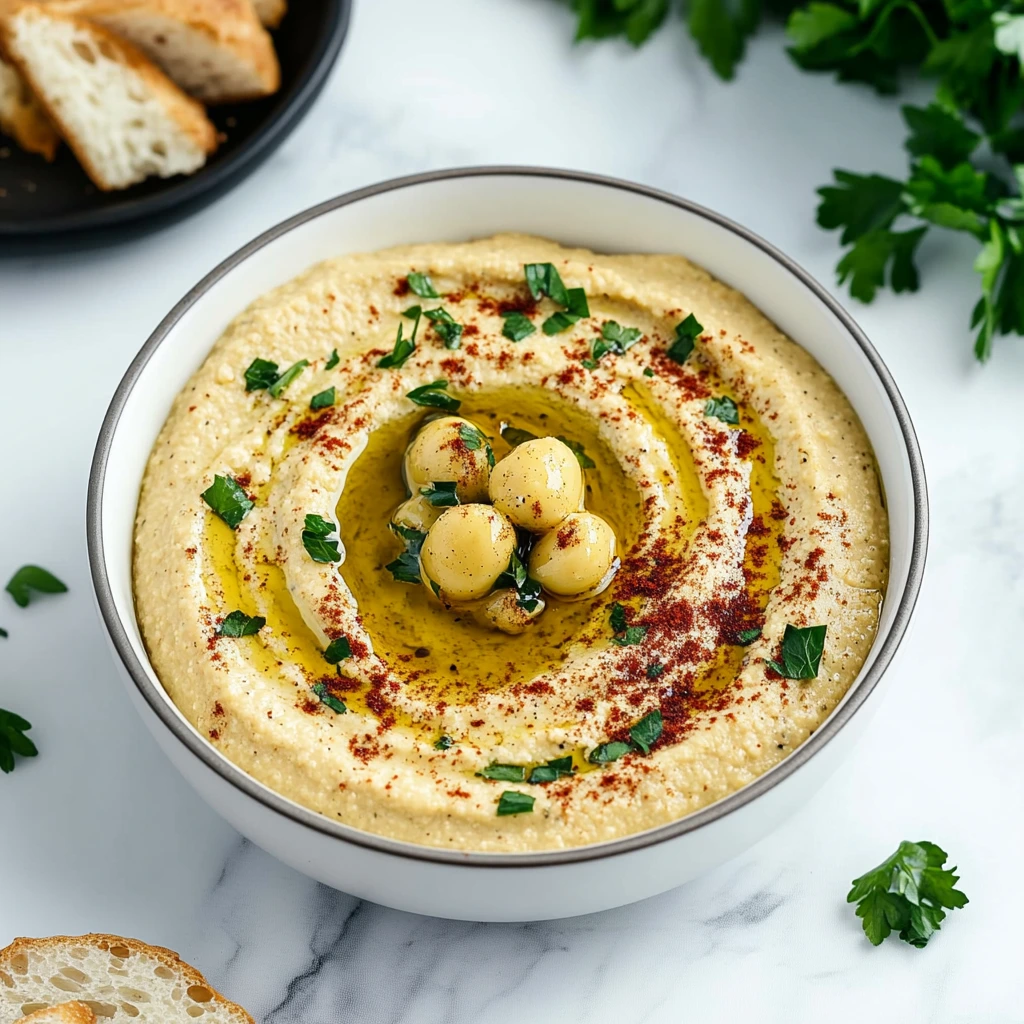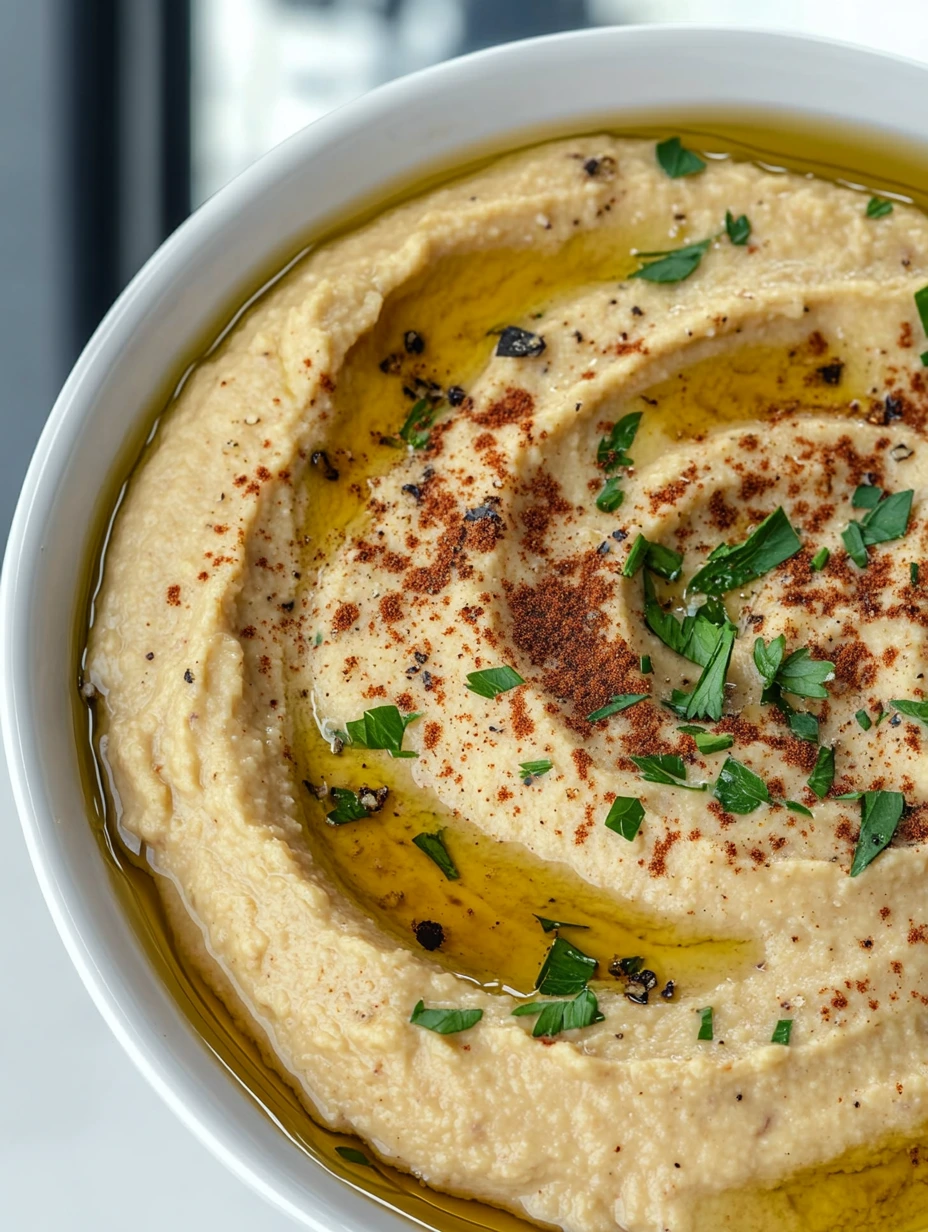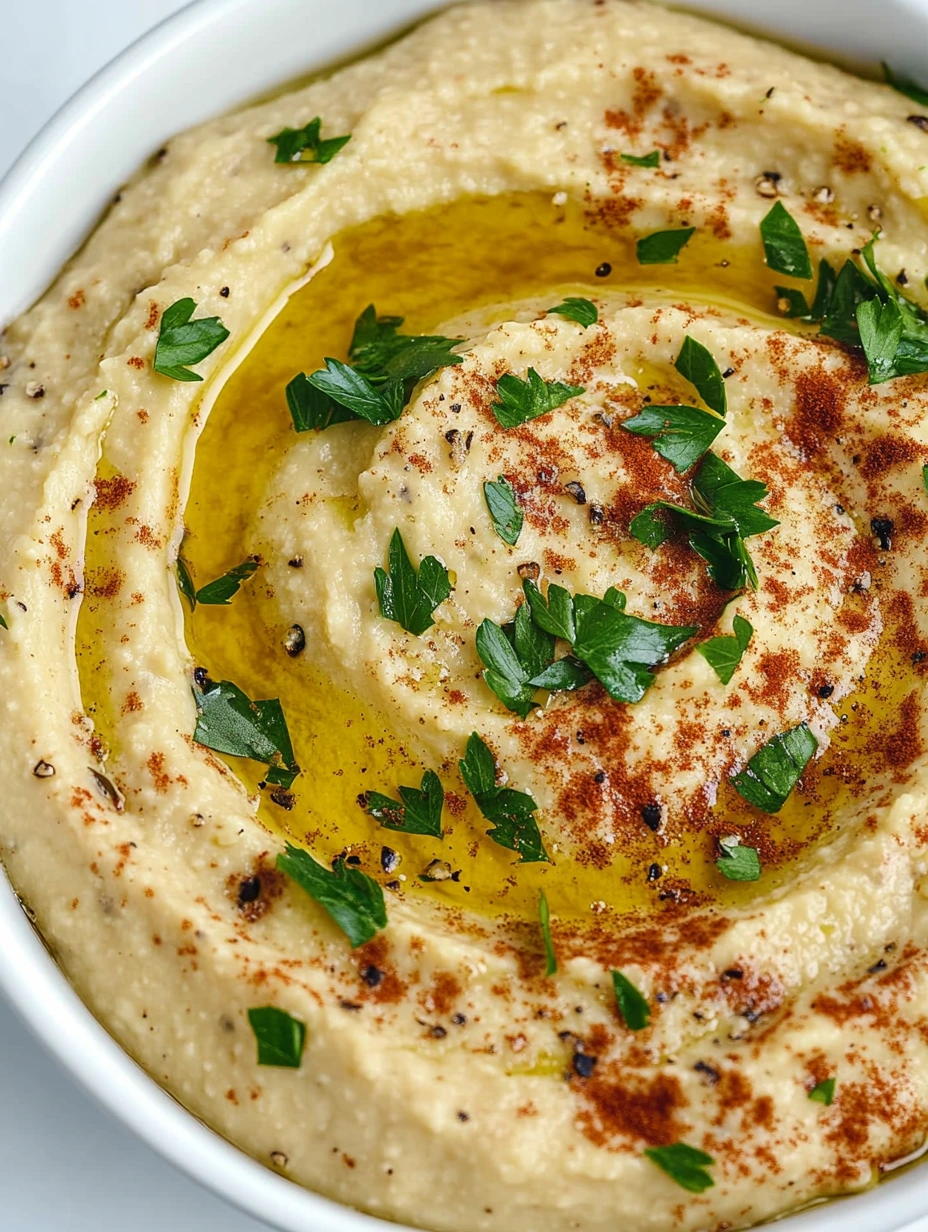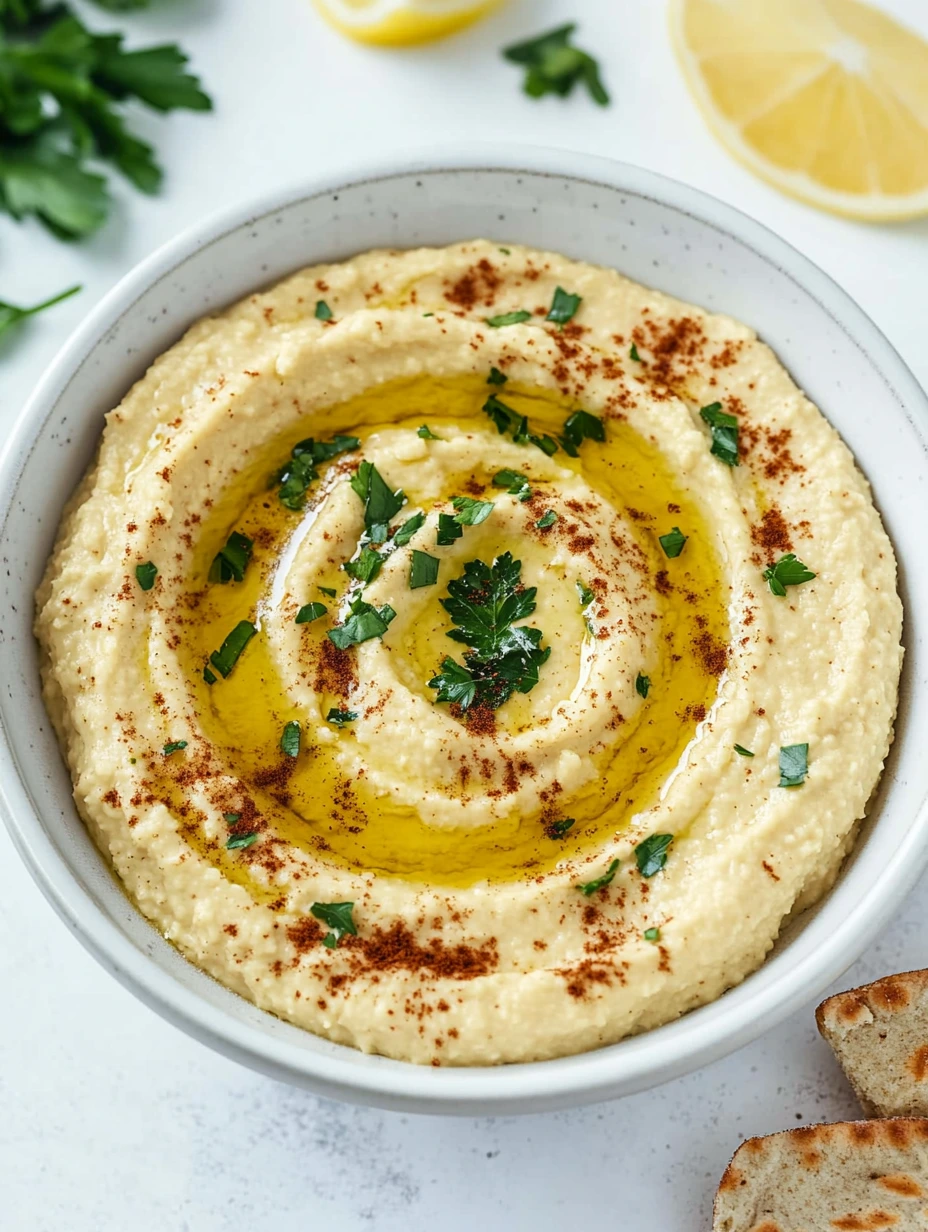 Pin it
Pin it
Hummus captures Mediterranean cooking at its best - simple yet generous. This creamy chickpea blend with sesame, fresh garlic and lemon juice strikes the perfect balance between rich and light. Once you've made your own version, you'll never go back to store-bought options - the flavor difference is just too obvious.
When I first brought my homemade hummus to a get-together with friends, the bowl was empty within minutes. What really caught me off guard was my brother-in-law's reaction - he usually avoids foreign foods but asked me for the recipe after going back for thirds! Fresh ingredients plus toasted spices really change the game.
 Pin it
Pin it
Key Ingredients
- Quality canned chickpeas: preferably organic ones with a soft texture that'll guarantee smooth hummus
- Real tahini: this sesame paste with its slightly bitter taste creates that unmistakable Mediterranean hummus signature
- Freshly squeezed lemon: its bright acidity wakes up all the flavors and brings that characteristic freshness
- Cold-pressed extra virgin olive oil: liquid gold that coats every bite with unmatched richness
Perfect Execution
- Chickpea prep:
- Start by thoroughly washing your chickpeas under cold water to get rid of excess salt and preserving liquid. Then drop them in boiling water for exactly ten minutes to soften them while keeping their natural flavor. Drain them carefully and let them cool a bit.
- Skin removal:
- While the chickpeas are cooling slightly, take time to remove as many outer skins as possible. Many people skip this step, but it makes a huge difference in your final hummus texture. Gently rub the chickpeas between your fingers to loosen those transparent little skins that could ruin your perfectly smooth creation.
- Flavor prep:
- Peel and crush fresh garlic to release all its flavor. Carefully squeeze your lemon for fresh, tangy juice. Measure your tahini precisely after stirring it well to mix the oily and solid parts that often separate when it sits in the jar.
- Blending everything:
- Put your still-warm chickpeas in your food processor. Add the crushed garlic, smooth tahini, fresh lemon juice, a generous pinch of freshly ground cumin and a touch of mild paprika. Pour in your first drizzle of quality olive oil and a pinch of sea salt. Pulse briefly to start combining everything.
- Getting the texture right:
- Keep blending while slowly adding some ice-cold water - a chef's secret for airy texture. Stop regularly to scrape down the sides and check the consistency. You want perfectly smooth cream that's slightly fluid but still thick enough to stay on a spoon without running off.
My first hummus was a total mess - grainy and bland. During a trip to Beirut, I learned from a local restaurant owner who showed me why removing skins matters and why adding ice water while blending makes such a difference. Now my hummus has become famous among my friends - some even call the day before their parties asking me to make some!
 Pin it
Pin it
Stylish Serving
Hummus deserves a presentation that highlights its creamy texture and rich flavor. Spread it generously on a shallow plate, making swirls with the back of a spoon. Slightly hollow out the center to pour in a generous drizzle of olive oil, forming a golden pool. Sprinkle with smoked paprika for color and extra spice. A few fresh cilantro leaves will add a refreshing green touch and create an appealing visual contrast.
Creative Twists
Traditional hummus works wonderfully for creative interpretations without losing its identity. A slightly spicy version with Espelette pepper or harissa offers more intense sensations for those who enjoy stronger flavors. Food lovers will appreciate a fancy version with toasted pine nuts and a touch of acacia honey that brings sweetness to balance the lemon's acidity. For a lighter, more colorful option, mix in roasted beets for a spectacular pink color and a pleasantly earthy sweetness.
 Pin it
Pin it
Smart Storage
This fresh preparation can easily fit into your weekly meal planning. After it's completely cooled, transfer your hummus to a glass container with a tight seal. Cover its surface with plastic wrap touching directly on the hummus to prevent oxidation, then close tightly. In the fridge, it'll stay good for four full days. For longer storage, divide it into individual portions in freezer-safe containers after pouring a protective drizzle of olive oil on top. This way it can last up to two months without noticeable texture changes.
Frequently Asked Questions
- → Why use baking soda with chickpeas?
- Baking soda softens the chickpeas, making it easier to take off the skins. This results in a smoother, creamier hummus.
- → Can tahini be replaced in the hummus?
- Tahini (sesame paste) is key for the classic flavor, but you can swap it with almond or cashew butter for a twist. Just know it’ll taste a bit different.
- → What do ice cubes do when blending hummus?
- Adding ice cubes keeps the texture light and fluffier as it blends, and it doesn’t need extra oil for creaminess.
- → What’s the traditional way to serve hummus?
- You can serve it in a shallow bowl with a swirl of olive oil in the middle. Top with za’atar or paprika, and enjoy with warm pita or fresh veggies like carrots and cucumbers.
- → Can hummus be flavored with other ingredients?
- Of course! Jazz it up with roasted peppers, olives, sun-dried tomatoes, cooked beets, or even pesto for colorful and flavorful variations.
